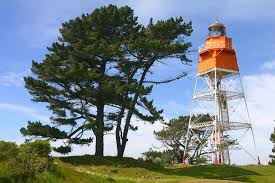Farewell Spit forms the northern side of Golden Bay and is the longest natural sandbar in New Zealand and the 4th longest in the world. The sweeping sandbar stretches 26km above sea level with another 6km extending underwater. This claw shaped slither of fine golden sand runs eastwards from Cape Farewell which is the South Island’s northernmost point.
As a wetland and sanctuary for migrating wading birds, Farewell Spit is internationally important. More than 90 species live in the various habitats created by the sandbar, including salt marshes, extensive mudflats and relatively sheltered sand dunes. To add to the importance of the area as a nature reserve, a rare sea-level gannet colony is also located there. Godwits are particularly important inhabitants of Farewell Spit, taking just eight days to fly 11,000 kilometres non-stop from Alaska, the longest non-stop flight undertaken by any bird.
WHALE TRAP
The northern side of the spit is constantly exposed to the prevailing winds which average over 25 km/h. The southern side which faces Golden Bay is more stable and largely covered with vegetation. Unlike the tide action around most of New Zealand where high and low tide levels are not too dramatic, the tide here can recede seven kilometres from land exposing some 80 square kilometres of mud flats. Unfortunately, the extreme tide action is also a trap for whales which are too frequently stranded there. Since records began 680 whales have died at Farewell Spit. The worst stranding took place on February 10th 2017 when 416 pilot whales were beached. Before a huge rescue effort was swung into action, three quarters of the animals were already dead. Both tourists and locals raced to the sands to help the surviving whales back to deep water but some of these returned to the spit with further loss of life.
HISTORY
In1642, Dutch explorer, Abel Tasman, was the first European to see the spit, calling it Sand Duining Hoeck. It would be a further 128 years before another European would see the dangerous finger of sand when Captain James Cook sailed past it in 1770. He drew Farewell Spit as a broad peninsula on his maps. He named the nearby headland Cape Farewell, so the early European settlers called the sandbanks ‘Cape Farewell Spit’ before it was shortened to its present name. The name made sense as it was the last land Cook sighted after heading for Australia at the end of his first voyage to New Zealand.
LIGHTHOUSE
The Farewell Spit lighthouse was first lit on 17 June 1870 after a number of ships were wrecked on the spit. The hardwood used to build the tower started to decay rapidly as it didn’t stand up well to the frequent blasting by the sand and salt-laden winds experienced at the end of the spit so the original tower was replaced in 1897 by the present structure. Despite the warning light from the lighthouse, ships continued to come to grief on the sandbar. One of the most dramatic was the loss of the immigrant sailing ship Queen Bee in 1877. The 50 passengers (some reports claim only 30 onboard) took to three small rowboats but these went missing and a large search was mounted involving two steamers from Nelson and a schooner from Wellington. Only one of the rowboats was located, the other two being lost forever somewhere in the exposed seas. In 1917, the steamer Port Kembla, carrying general cargo to England, apparently struck a German mine and sank within sight of Farewell Spit.

Due to the spit only rising 30 metres (98 ft) above sea level at the lighthouse’s location, the 27 metre (89ft) tower is taller than usual for New Zealand’s coast. The light can be seen for 35 kilometres (22 miles). The original oil-burning lamp was converted to a 1000 watt electric lamp in 1954. Diesel power was replaced by a mains electricity cable which was buried in the sand in 1966. When the light was fully automated in 1984, the last lighthouse keeper in New Zealand was withdrawn from the lighthouse service. The original lamp was changed to a modern rotation beacon with a powerful halogen bulb in 1999.
Currently the lighthouse keeper’s house and two accommodation buildings are being maintained by the Department of Conservation and Maritime New Zealand for use as overnight accommodation for the increasing number of tour groups who want to experience this windswept, isolated nature reserve.
Ceidrik Heward
Ceidrik Heward is an Amazon TOP SELLING AUTHOR and has lived and worked in 7 countries working as a TV cameraman, director and film tutor. For the past 17 years he has focused on writing and has been published in magazines and newspapers in Europe, USA, Asia and the Middle East.
His interests include photography, psychology and metaphysics. He loves to read and always has at least 3 books on the go. He has written 22 manuals/books and has just completed his 4th short novel. Ceidrik believes sharing information and stories is the best way to stimulate the imagination and enrich our lives.




















 Visit Today : 363
Visit Today : 363 Total Visit : 1133540
Total Visit : 1133540
Speak Your Mind